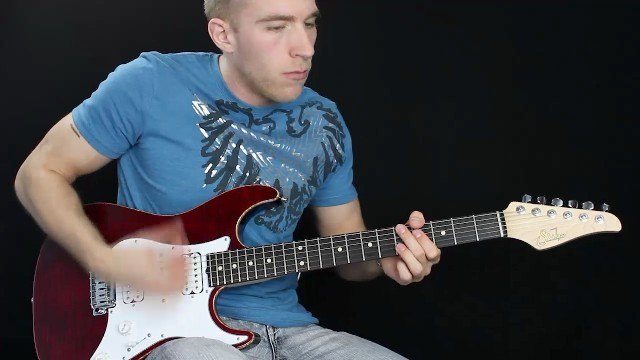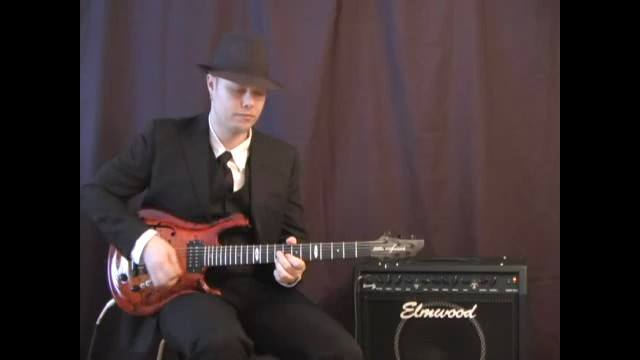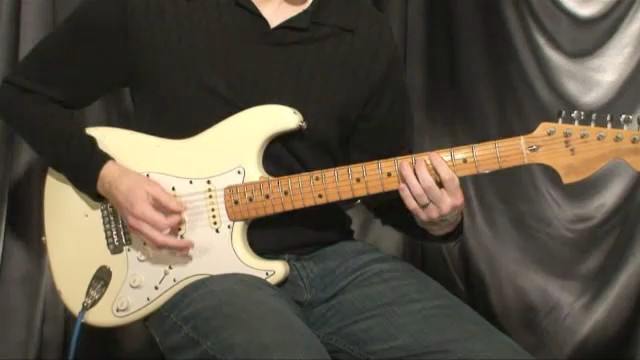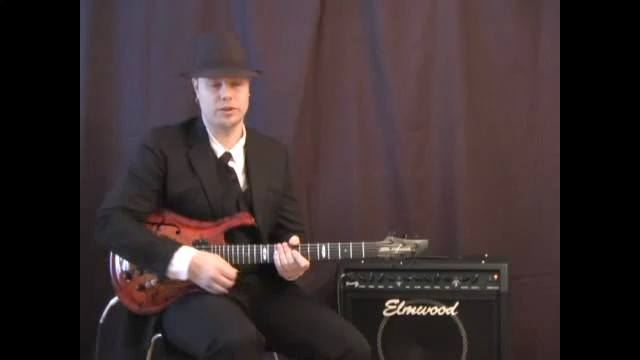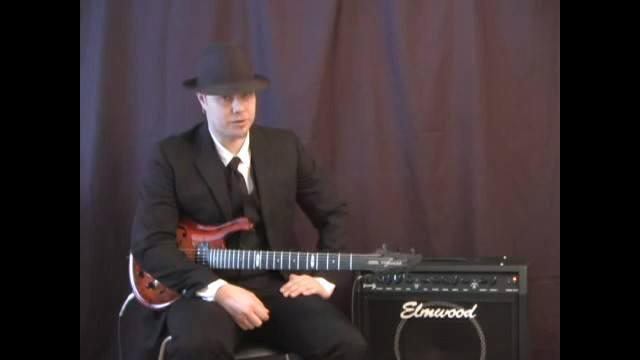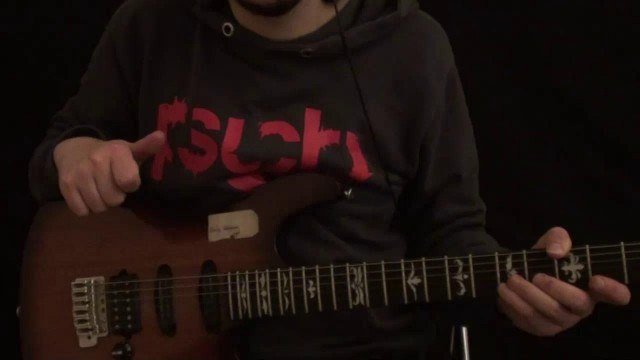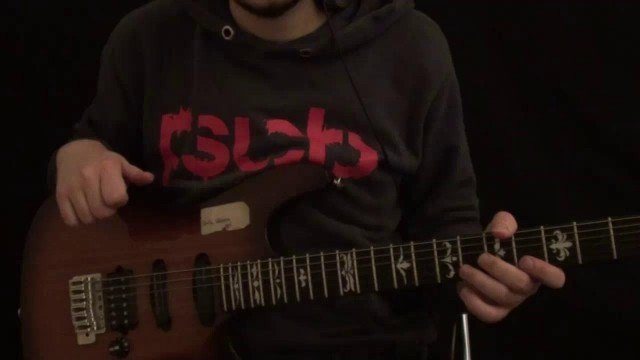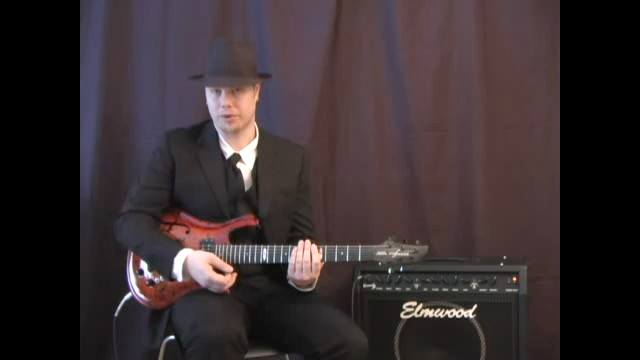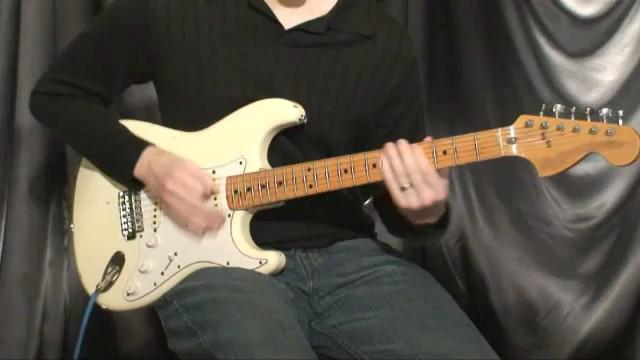This example expands further on the idea presented in the last one, about inserting rests into the 16th note strumming pattern. It also contains different note values, and chords.
To start out with we use the same A7 (no root) and A7sus4 (no root) as before. But, in the second bar, we encounter 2 new chords. The first one is a B7sus4 (no root), but the second one is a bit trickier. Analyzing chords in funk must always be done looking at the base, and general harmony of the tune. In this case the chord could either be a Eadd9 (E, G#, F#), which could be emphasized by laying down an E in the bass. For these examples however, I have used the same bass line for almost all examples. I still think of this chord as a Eadd9, but other options would present themselves with other root notes. Just two examples would be B n the bass, which would give us a B6sus4. Using a D in the root however, would give us a Dadd9#11. The possibilities are many, depending on the bass and chord structures of the song. In funk though, simpler is almost always better.
Had enough chord theory for a while, have you? Then turn the page for shuffle heaven!





























































